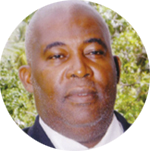
THERE has been an increase in violence in our schools, in our communities, and in our nation. The situation has given rise to serious concern for schools, our communities, and indeed, our nation.
Now, the problem of youth violence has come to the fore, considering that seventeen-year-olds have been involved in violent behaviours.
Indeed, youth violence is the leading cause of homicides in St. Lucia. That situation harms families, neighbours, schools, and the entire communities.
It is no surprise now, that each day a violent act or homicide is being investigated by the major crimes’ unit of the Royal St. Lucia Police Force.
Now, the causes of youth violence or the factors which influence whether youth violence occurs, include multiple factors.
Factors which influence youth violence include experiences, relationships with friends and family, and community traits.
By community traits I mean the qualities that make a positive community.In the final part of this article, I will present prevention opportunities that make youth violence less severe in our ‘Fair Helen’, and, indeed, anywhere in the world.
The presentation includes, a public health and other approaches which would support a sustained reduction in youth violence; strategies that develop skills of youth and build the health and safety of families, schools and neighbourhoods.
The following is the final part of actions, when implemented, could prevent youth violence:
Reduce the risk for violence and promote the strengths of young people.
(a) Families, caregivers and other adults must be a consistent model for how to respond non-violently to conflict, stress and fear.
There is a body of knowledge which indicate that children and youth are imitators of adults. Consequently, adults should constantly be aware that children and young people continue to focus on them.
(b) Families, caregivers and other adults must pay attention when young people behave well and help them see the benefits that come from their good choices or actions.
(c) Families, caregivers and other adults should build a connection with young people that allows them to feel comfortable discussing violence and related concerns.
I have heard many adults say that they have difficulty communicating, one on one, with their young children, perhaps because it is not part of our culture.
(d) Families, caregivers and other adults should carefully monitor the activities of young people and their behaviours, to allow them to make safe choices, and talk with others who have a strong influence on young people
(e) Families, caregivers and other adults prevent minors from getting unsupervised access to firearms at home, from family, and from friends.
Many years ago, in a discussion with a close friend, he indicated that al family members had gone to bed at the usual time. However, he got up from bed during the night only to find that his young son missing, and even worse he had left with his firearm. That was devastating for him, to say the least.
The important point here is that parents and caregivers should make random checks during the night to ensure that our young children have not left the home during the night without permission.
(f) Families, caregivers and other adults should take advantage of help that is available in school and the community, and share information and other resources in their possession, with others.
Make choices that promote safety and opportunities to thrive.
(a) Families, caregivers and other adults should stop and think before saying and doing that could hurt others, act in non-violent ways, and get help from a trusted adult or safe place.
Many children and student would tell you the number of times their parents have used obscene language to them, not caring about the effects that that language could have on their children, or other children and young people in their custody.
(b) Families, care givers and other adults should spend time with young people and in places that are at low risk.
Help others be violence free.
(a) Families, caregivers and other adults should help their neighbours and others be violence free, and support those who have been hurt by violence.
As community members, we all have some knowledge and skills that we can share within the neighbourhood. We should not be shy or afraid of sharing knowledge and skills within our community or neighbourhood.
(b) Show others how to stay safe.
As an educator, I often use the phrase “Each one, teach one”.
(c) Get involved in violence prevention work.
In conclusion, I would like to state that everyone has an important role to play in stopping youth violence before it starts. Indeed, this article have provided information and action steps to help each of us to be part of the solution.





